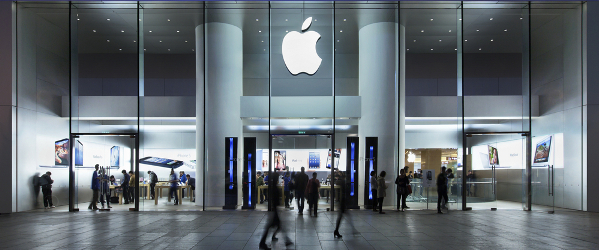
Apple posted a drop in iPad sales yesterday, in contrast to strong sales of its iPhone handsets.
The firm reported a 12% profit growth, but iPad sales have continued to drop two quarters in a row. Apple shipped 13.2 million iPads in the June quarter, 8 percent fewer than a year earlier.
But the firm shifted 35.2 million iPhones in the quarter ending 28 June, which is a boost from the 12.7 million twelve months earlier. Sales in China, India, Russia, and Brazil helped to fuel growth.
Apple CEO Tim Cook said: "We’re thrilled with the results, and we’re thrilled with where we are going."
Profit in the third quarter was $7.75 billion, which is up from $6.9bn last year. Revenue was up 6%, reaching $37.4bn.
iPhones are still on top
The iPhone is still Apple’s moneymaker, with the iPhone 5 and iPhone 5S sparking massive sales, despite worldwide markets reaching saturation points for mobile devices. With 35.2 million iPhone sales, the phone accounts for just over 50% of Apple’s total revenue. App Store sales also contribute massively to this figure.
iPads affected by tablet saturation
With the slowing down of iPad sales, could Apple’s decision to produce larger handsets be a mistake? As the global tablet market reaches saturation point, will consumers be interested in larger iPhones if they already own 7 or 10-inch iPads?
Enterprise penetration
However, the joining of forces with IBM could give a much needed boost by injecting Apple devices into the enterprise market. The deal opens the door for Apple to IBM’s sales machine, which will promote the use of iPhones and iPads (and possibly very soon iWatches) in industries such as health care and banking.
Device manufacturers are targeting the business market as companies engage in response to demands from workers for better mobile access to enterprise applications.
All go in China
Emerging markets represent huge potential for Apple despite exsiting smartphone take up. Apple saw revenue from Greater China rise by 28% year-on-year to $5.9 billion in the three months to June.
But where is the next iPhone?
There is still no concrete sign of the iPhone 6. But the likely launch date of August or September means that its early sales will come under the current quarter’s revenue.
The only hint we got from Cook about the iPhone 6 is that he said Apple was excited about ‘new products and services that we can’t wait to introduce’.






